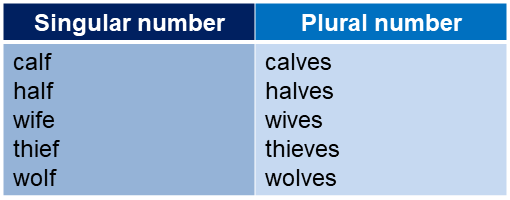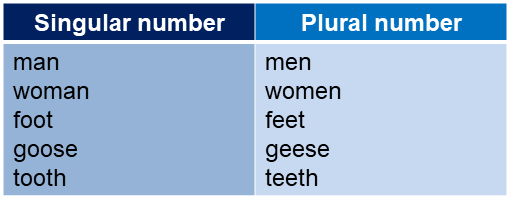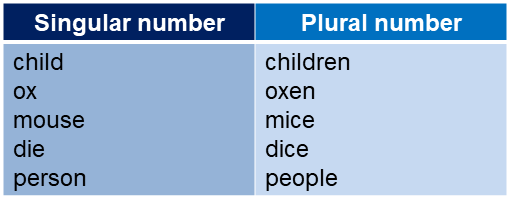This is Lesson 7 of our Basic English Series.
Parts of Speech 1.4
Nouns Part 4 – Numbers of Nouns
In this lesson, we will learn three more noun rules to keep in mind especially in writing.
Nouns rule number seven (ENR7), and ninth in the English Grammar.
ELGR9: Most nouns ending in f or fe form the plural by changing f or fe into v and adding es.
Examples:

Just like other rules there are exceptions in the above. An example is the word hoof which can be written in its plural form as hoofs or hooves. The key is familiarization and regular reading can enrich your vocabulary.
Let’s move on to the next noun application rule.
Nouns rule number eight (ENR8), and tenth in the English Grammar.
ELGR10: Some nouns form the plural by changing the vowels.
Examples:

Nouns under ELGR10 are called irregular nouns because of their nature when forming the plural.
Here is another set of examples of irregular nouns.

Now let’s go to another rule of forming the plural of nouns.
Nouns rule number eight (ENR8), and eleventh in the English Grammar.
ELGR11: Some nouns have the same form for both singular and plural.
Note: These nouns are still called irregular nouns.
Examples:

Again, as mentioned earlier, familiarization is needed to be able to recognize these differences and reading is the best way to improve this skill. So set a regular reading schedule for yourself. Just between 15 and 30 minutes each day will greatly improve your skills in these areas. For reading materials, you may want to visit our library here and choose the materials you want to read from our internal resources or other articles and books written by our friends and business partners.
We have covered three more English grammar rules in this lesson, particularly with the use of nouns. We have five more noun application rules in the next couple of lessons before we move on to the next part of speech.
You may also jump to the lessons you want to see below.
